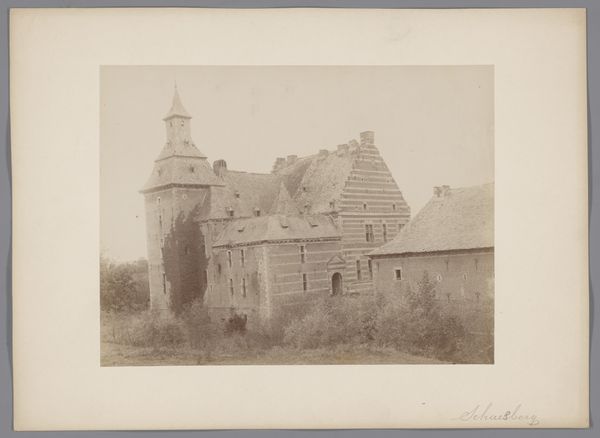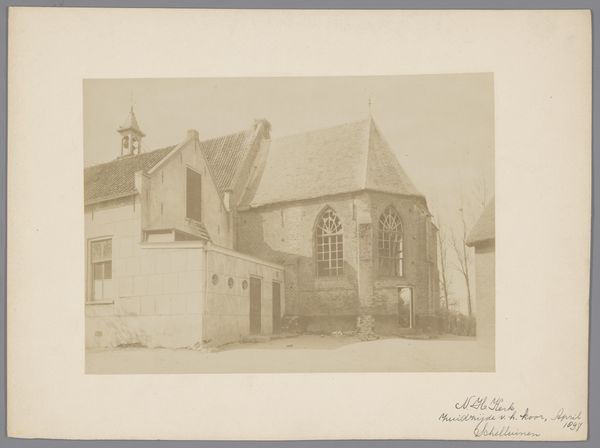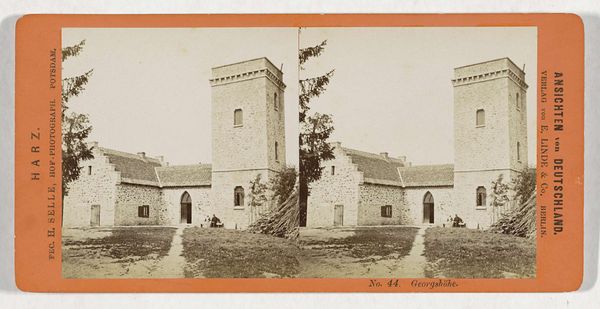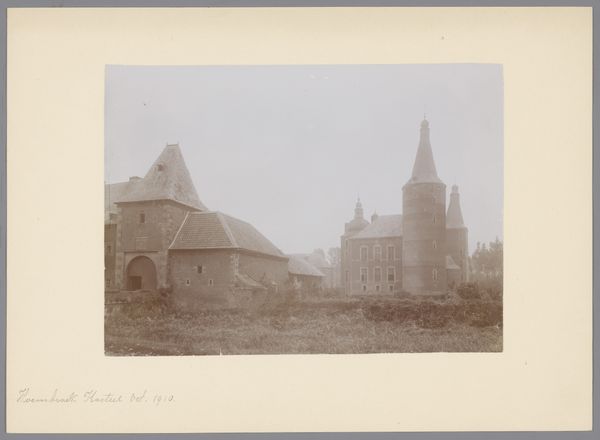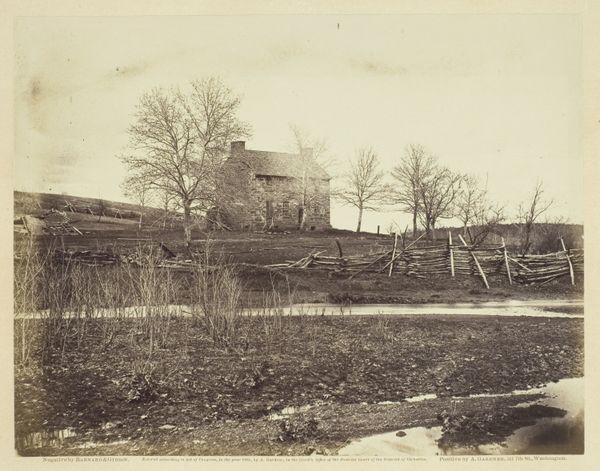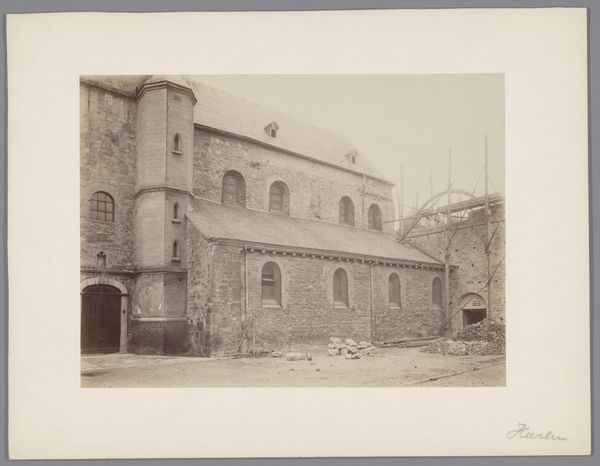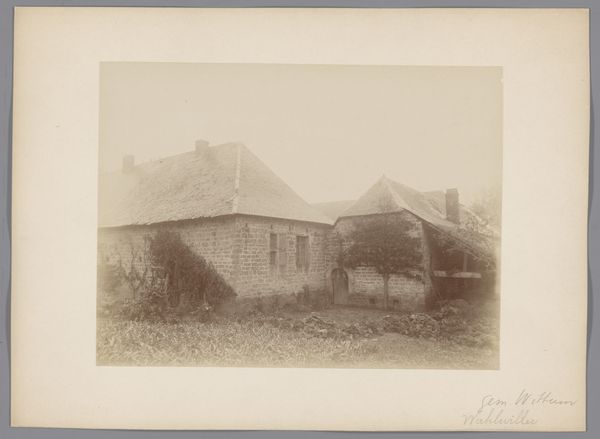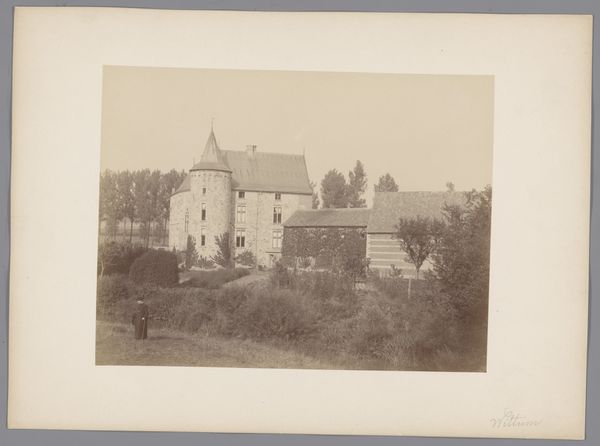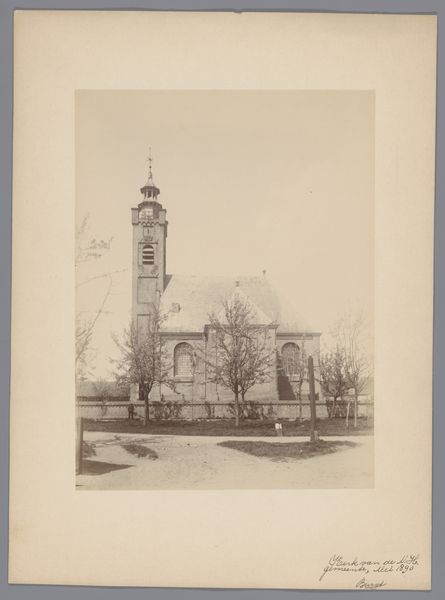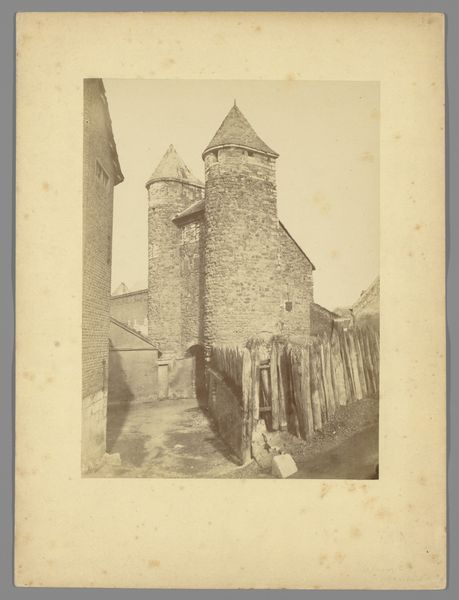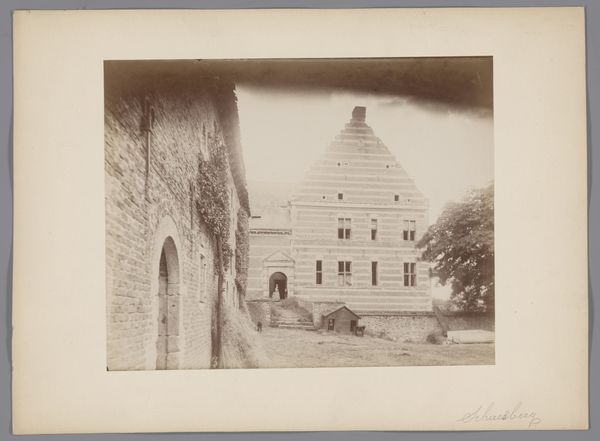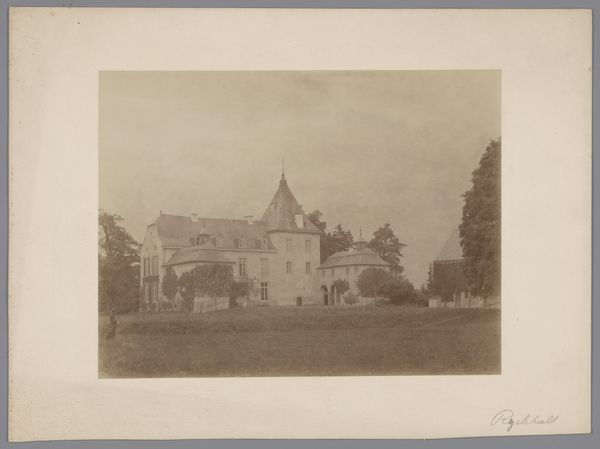![[Tomb of Bayazid, BISTAM] by Luigi Pesce](/_next/image?url=https%3A%2F%2Fd2w8kbdekdi1gv.cloudfront.net%2FeyJidWNrZXQiOiAiYXJ0ZXJhLWltYWdlcy1idWNrZXQiLCAia2V5IjogImFydHdvcmtzL2I3N2IzZWNhLTBjZTAtNGZiNy05NGQxLWI1ZGY5MTAxZjE2ZS9iNzdiM2VjYS0wY2UwLTRmYjctOTRkMS1iNWRmOTEwMWYxNmVfZnVsbC5qcGciLCAiZWRpdHMiOiB7InJlc2l6ZSI6IHsid2lkdGgiOiAxOTIwLCAiaGVpZ2h0IjogMTkyMCwgImZpdCI6ICJpbnNpZGUifX19&w=3840&q=75)
photography, albumen-print, architecture
#
landscape
#
photography
#
arch
#
19th century
#
islamic-art
#
albumen-print
#
architecture
Copyright: Public Domain
Curator: This is Luigi Pesce's albumen print "[Tomb of Bayazid, BISTAM]", created sometime between 1840 and 1869. It captures a stark architectural scene. Editor: My initial impression is one of profound stillness and age, rendered in sepia tones. The forms, though simple, are imbued with a distinct presence. Curator: Indeed. Pesce's choice of the albumen print process, with its lengthy exposure times, inherently captures a sense of duration and place. Notice the physical process, the slow accretion of detail that renders architecture with such specificity, as we might explore the social conditions of how photography was beginning to document such culturally-significant sites for broader consumption. Editor: Yes, but apart from its historical context as you put it, the image commands attention through its skillful organization. The composition draws the eye along a precise horizontal plane, with vertical structures providing punctuation. The geometric arrangement and textural details creates a harmonious visual rhythm. Curator: And those textures are inseparable from understanding the human hands that shaped these stones, brick by brick, for this sacred complex that now is partially damaged but we know from documentation it has held layers of social use in a larger political ecology. It's imperative we examine how spaces like this functioned within communities—as a place for rest, worship, reflection—but also through the exploitation of labor it might represent. Editor: Even divorced from that, I'd argue there is an implicit balance achieved through tone and form, guiding visual engagement through the picture plane. The monochrome palette accentuates nuanced variations of dark and light. See how shadows define shape and reveal an implicit structural architecture to suggest volume without overstating detail? Curator: Right. We see these ruins and it compels us to ponder how they came to be but moreover *who* was forced to make these and who had to rebuild and repair over many centuries, under circumstances and social demands to produce this. Editor: It seems to point not just toward how history, as it becomes present through photographic media, still maintains intrinsic order despite a partial state. Perhaps formal means and conceptual ones—and of course the historical backdrop you've elucidated—do come into meaningful alliance. Curator: Well put. These historical views reveal processes embedded in this artwork. Editor: Precisely! This exercise deepens our grasp of Pesce's photograph, uncovering a compelling narrative about presence, materiality, and form.
Comments
No comments
Be the first to comment and join the conversation on the ultimate creative platform.
